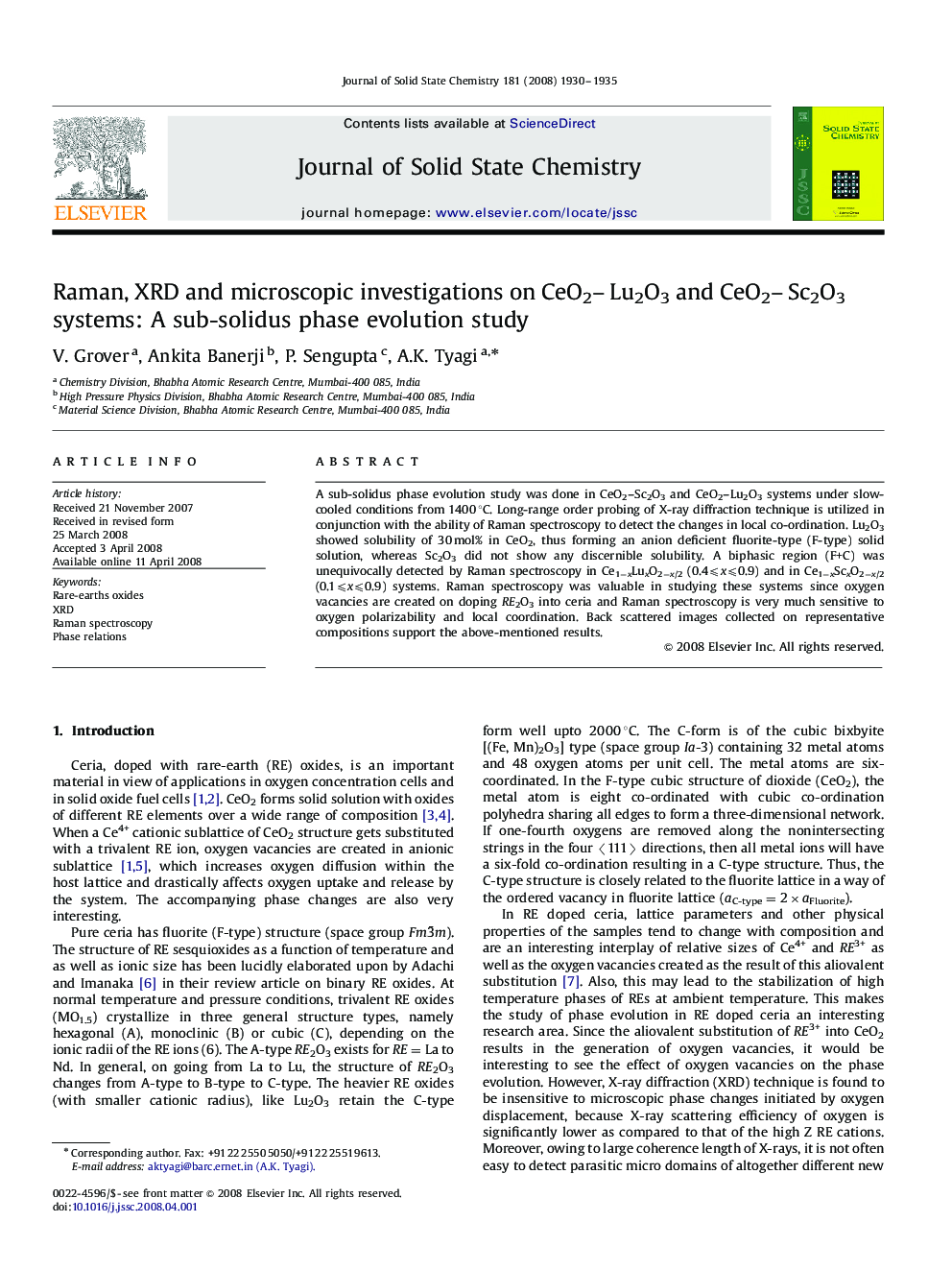| کد مقاله | کد نشریه | سال انتشار | مقاله انگلیسی | نسخه تمام متن |
|---|---|---|---|---|
| 1332175 | 979032 | 2008 | 6 صفحه PDF | دانلود رایگان |

A sub-solidus phase evolution study was done in CeO2–Sc2O3 and CeO2–Lu2O3 systems under slow-cooled conditions from 1400 °C. Long-range order probing of X-ray diffraction technique is utilized in conjunction with the ability of Raman spectroscopy to detect the changes in local co-ordination. Lu2O3 showed solubility of 30 mol% in CeO2, thus forming an anion deficient fluorite-type (F-type) solid solution, whereas Sc2O3 did not show any discernible solubility. A biphasic region (F+C) was unequivocally detected by Raman spectroscopy in Ce1−xLuxO2−x/2 (0.4⩽x⩽0.9) and in Ce1−xScxO2−x/2 (0.1⩽x⩽0.9) systems. Raman spectroscopy was valuable in studying these systems since oxygen vacancies are created on doping RE2O3 into ceria and Raman spectroscopy is very much sensitive to oxygen polarizability and local coordination. Back scattered images collected on representative compositions support the above-mentioned results.
Powder XRD and Raman spectroscopy were used in conjunction to delineate the phases present in CeO2–Lu2O3 and CeO2–Sc2O3 systems. LuO1.5 has 30 mol% miscibility, whereas Sc2O3 has no discernible solubility in CeO2. Raman spectroscopy clearly showed the evolution of second phase with change in concentration of the reactants thus supporting XRD data. Back scattered images obtained on representative compositions verify the results.Figure optionsDownload as PowerPoint slide
Journal: Journal of Solid State Chemistry - Volume 181, Issue 8, August 2008, Pages 1930–1935